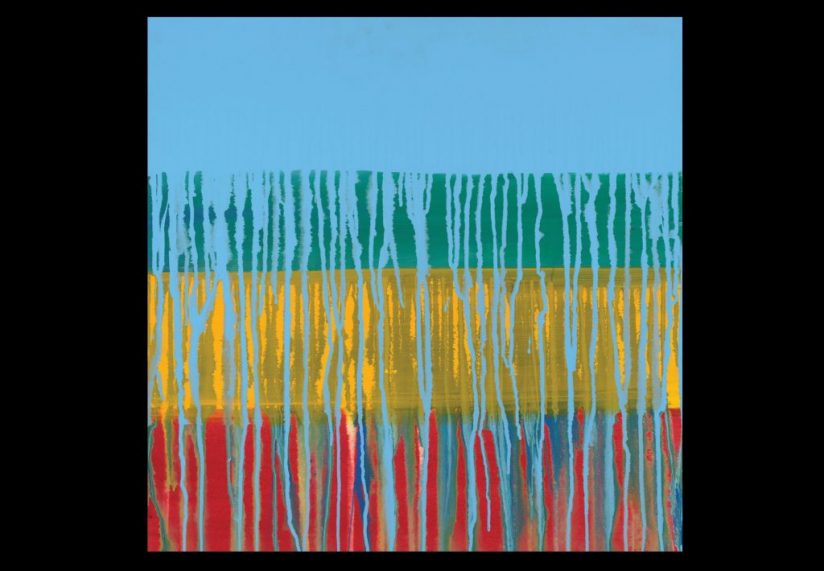KENJEEVARAM SERIES
“THE KANJEEVARAM PAINTINGS REJECT THE GLAMOUR AND GRAVITAS OF THE SARI AND ARE DEVOTED ONLY TO THE EXAMINATION OF EFFECT, THE WALK OF LIGHT AND SHADE ON FABRIC…SWINGING BETWEEN FRIVOLITY AND SENSITIVITY, THE EFFECT IS OF ENTIRE CANVASES BURSTING INTO SONG.”
Oommen’s Kanjeevaram paintings have an elusive quality: of gold catching light, of opulent bolts of colour, of movement. A garment shifts and settles. A sari’s pleats fan open and close as a woman moves through a room. The whisper of color predominates. The series is inspired by South India’s most famous variety of silk sari. On streets, in temples, and at the workplace, one sees women wearing them. Resplendent, expensive and hardy, the fabric of a real Kanjeevaram sari is usually shot with threads of multiple colors that create a faceted effect, of colors changing and dancing in the light. Horizontal stripes repeat across the height of the canvas, making a dishevelled pattern. Crimsons disintegrate into purples, and into crimson again. Colours weep and flood into each other.
In the most representational sense, Oommen’s fine drips mimic frayed threads, sometimes tassels. As abstractions, they transform the notion of an expensive and highly traditional garment into a painter’s experiment. What if a sari really looked like this? What if dye really bled into dye? What if the sari was not a preconceived, manufactured object designed with clear patterns of colour, but a painter’s cathartic creation?
The best pieces in this series are not the ones that capture the saris’ sheen and gloss, but the ones that dismiss it. Through the paintings, Oommen studies what truly interests and first captivated him — color. Therefore, where the Kerala paintings resonate with the exiled artist’s wistful and complex attachment to a home state, the Kanjeevaram series is purely a study in style.
Jean Cocteau said that decorative style never existed. He called style the soul, which assumed the form of the body. For Oommen, style is everything: the medium, the process and the final result. The Kanjeevaram series is playful and celebratory. It does not possess the lyricism of the Kerala series, nor the depth of Sacred Places. It is not concerned with creating a likeness, and appears flat and instantaneous. The bright blues and dirty greens that trail down a canvas and end in pools of orange possess none of the narrative that Oommen’s other series so clearly convey. The Kanjeevaram series instead, is bold and unapologetic, color for color’s sake.
Yet it is difficult to argue how much of a Kanjeevaram canvas is inspired by saris and how much it is inspired by Kerala, because the misted and manipulated patterns of colour are as much highly abstracted treatments of remembered landscapes as they are tributes to a garment. Disguised in a Kanjeevaram painting’s fine strands of colour are the long lines of rainwater dripping to the ground in a tropical palm grove. In golden stripes, we see hints of Oommen’s yellows, and the unabashed flare of the Kerala sun. The Kanjeevaram paintings reject the glamour and gravitas of the sari and are devoted only to the examination of effect — the walk of light and shade on fabric. Oommen’s entangled, unmannered, ropy drips reach into a stripe and play it, like music. Swinging between frivolity and sensitivity, the effect is of entire canvases bursting into song.
Oommen’s art has become more abstract lately to get beyond the landscape, to the memory of it. Oommen has switched from oil to acrylic paint, and has in turn begun to spray the paint with water, to cause it to run watery and transparently down the canvas (an effect that also constructs on canvas a metaphor of perception in monsoon-season Kerala), to erode paint down to the act of memory itself.



